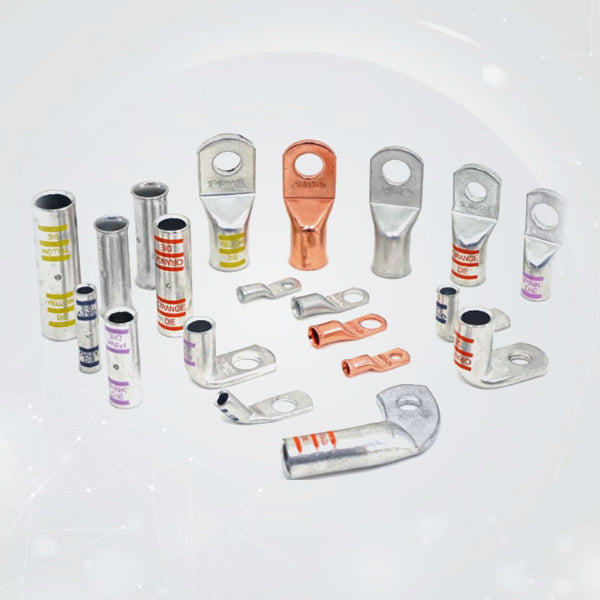
Tips and Tricks for Perfect Heat Shrink Tubing Application
In the realm of electrical work, creating secure, insulated, and protected connections is paramount. Among the various tools and materials that aid in this endeavor, heat shrink tubing stands out as a versatile and indispensable solution. From insulating wires and protecting solder joints to bundling cables and providing strain relief, heat shrink tubing offers a professional and reliable way to enhance the durability and safety of electrical connections. However, like any tool, its effectiveness hinges on proper application. This guide provides a comprehensive collection of tips and tricks to ensure perfect heat shrink tubing application, resulting in connections that are both aesthetically pleasing and functionally robust.
Understanding Heat Shrink Tubing
Before delving into the application techniques, it's crucial to understand what heat shrink tubing is and why it's so widely used. Heat shrink tubing is essentially a polymer tube that contracts radially when heated. This contraction allows the tubing to conform snugly to the shape of the object it's covering, providing a protective and insulating layer. The most common material used for heat shrink tubing is polyolefin, known for its flexibility, durability, and electrical insulation properties. However, other materials like fluoropolymer and elastomer are also used for specialized applications requiring higher temperature resistance or chemical resistance.
Why Use Heat Shrink Tubing?
The popularity of heat shrink tubing stems from its multifaceted benefits:
- Insulation: At its core, heat shrink tubing provides electrical insulation, preventing short circuits and protecting against electrical shock. This is particularly crucial at joints and connections where bare wires are exposed. By creating a non-conductive barrier, wire heat shrink tubing ensures the safe and reliable flow of electricity.
- Protection: Beyond insulation, heat shrink tubing acts as a shield against environmental factors that can degrade electrical connections. It effectively protects against moisture, corrosion, dust, and abrasion, all of which can compromise the integrity of the connection over time. This protective function is especially valuable in harsh environments where connections are exposed to the elements.
- Strain Relief: Mechanical stress and vibration can put a strain on electrical connections, potentially leading to fatigue and failure. Heat shrink tubing can provide strain relief by reinforcing the connection point and distributing stress more evenly. This reinforcement reduces the risk of wires breaking or becoming disconnected, enhancing the overall durability of the electrical assembly.
- Bundling and Organization: In complex wiring harnesses or cable assemblies, heat shrink tubing can be used to bundle wires together, creating a neat and organized appearance. This bundling not only improves aesthetics but also simplifies troubleshooting and maintenance. By keeping wires together, heat shrink tubing prevents tangling and reduces the risk of accidental disconnections.
Tips and Tricks for Perfect Application
Achieving a perfect heat shrink tubing application involves careful preparation, the right techniques, and attention to detail. Here are some essential tips and tricks:
- Choose the Right Size: Selecting the appropriate size of heat shrink tubing is paramount for a successful application. The tubing should have an inner diameter that is slightly larger than the object it will cover before shrinking. This allows it to slide easily over the connection. However, it's crucial to avoid tubing that is too large, as it may not shrink sufficiently to provide a tight fit. The ideal heat shrink tubing will shrink to at least 50% of its original diameter, ensuring a snug and secure fit.
- Cut the Correct Length: Cutting the heat shrink tubing to the correct length is essential for providing adequate coverage and protection. The tubing should extend slightly beyond the connection on both ends, typically by about 1/2 inch. This ensures that the entire connection is insulated and protected. Avoid cutting the tubing too short, as it may not provide sufficient coverage, and avoid cutting it too long, as it can be wasteful and create an untidy appearance.
- Position the Tubing Before Connecting: The optimal time to position the heat shrink tubing Kit is before making the final electrical connection. Slide the tubing over one of the wires before joining them. This prevents the difficulty of trying to maneuver the tubing over a bulky or awkwardly shaped connection after it's made. Planning ahead simplifies the application process and ensures a clean finish.
- Apply Heat Evenly: The key to achieving a uniform and effective shrink is to apply heat evenly around the tubing. A heat gun is the recommended tool for this purpose. Hold the heat gun a few inches away from the tubing and rotate the connection to ensure that all sides are exposed to the heat. Avoid concentrating the heat in one spot, as this can lead to uneven shrinking, blistering, or even burning the tubing.
- Start from One End: To prevent air from being trapped under the tubing, it's best to start applying heat from one end and gradually move towards the other. This technique forces any trapped air to escape as the tubing shrinks, resulting in a smooth and bubble-free finish.
- Use the Right Heat Gun: While a lighter or torch might seem like a convenient alternative, they are generally not recommended for shrinking heat shrink tubing. These tools produce an uneven and uncontrolled heat, which can easily damage the tubing or the underlying connection. A heat gun provides a more controlled and consistent heat, ensuring a professional and reliable result.
- Allow to Cool Completely: After applying heat, allow the heat shrink tubing to cool completely before moving or bending the connection. This cooling period allows the tubing to solidify and achieve its final shape and strength. Moving the connection while the tubing is still hot can distort its shape or weaken the bond.
Advanced Techniques
Beyond the basic application techniques, several advanced techniques can further enhance the functionality and aesthetics of heat shrink tubing applications:
- Lined Heat Shrink Tubing: For applications requiring enhanced protection against moisture and environmental contaminants, lined heat shrink tubing is an excellent choice. This type of tubing has an adhesive lining on the inside that melts when heated, creating a waterproof and airtight seal. Lined heat shrink tubing is commonly used in marine, automotive, and outdoor applications where connections are exposed to harsh conditions.
- Color Coding: Red heat shrink tubing and tubing in other colors can be used to identify wires or connections in complex wiring harnesses. This color coding simplifies troubleshooting, maintenance, and future modifications. Different colors can be assigned to different circuits, voltage levels, or functions, providing a clear visual representation of the wiring system.
- Heat Shrink Tubing Kits: For those who frequently work with electrical connections, a heat shrink tubing kit is a valuable investment. These kits typically include a variety of sizes and colors of heat shrink tubing, providing a convenient and organized solution for various applications. Having a kit on hand ensures that you always have the right size and type of tubing for the job.
Applications of Heat Shrink Tubing
The versatility of heat shrink tubing makes it suitable for a wide range of electrical applications, including:
- Electrical Connections: Insulating and protecting wire splices, terminals, and connectors.
- Wire Splicing: Reinforcing and insulating wire splices to prevent shorts and breakage.
- Cable Repair: Repairing damaged cable insulation and providing strain relief.
- Automotive Wiring: Protecting and organizing wiring harnesses in vehicles.
- Marine Applications: Sealing and protecting connections in marine environments.
Technical Details Recap
- Tools: Heat Gun
- Types: Lined, Colored
- Accessory: Heat Shrink Tubing Kit
Conclusion
Mastering the art of heat shrink tubing application is an essential skill for anyone working with electrical systems. By following these tips and tricks, you can ensure that your connections are not only electrically sound but also mechanically robust and aesthetically pleasing. Whether you're a professional electrician or a DIY enthusiast, perfect heat shrink tube application will elevate the quality and reliability of your electrical work.

